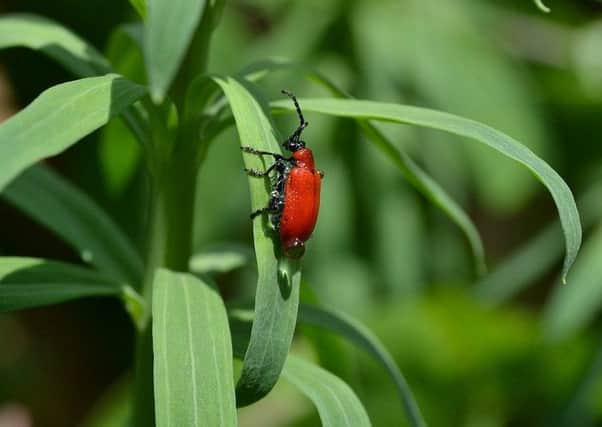Column: Did you know that there are more beetles on the planet that any other animal?


It turns out that a bit of garden housekeeping can open up a world of small creatures to study.
One sunny afternoon last week I decided to wash all the terracotta dishes which have been stacked up waiting to be placed under pots to help with water retention over the summer.
Advertisement
Hide AdAdvertisement
Hide AdLifting and moving the dishes revealed all sorts of creatures – a red beetle, a curled up millipede, numerous wood lice and several pale, blotchy slugs.
These I now know are grey field slugs; rather ugly things and no friend to the gardener, but I was unable to kill them and just tipped them into a secluded, dark part of the garden by the bins.
The woodlice are by far the commonest creatures a bit of pot moving can unearth, crustaceans with seven pairs of legs.
They are often found wandering around the house as well – especially the bathroom, which makes sense because they like damp.
Advertisement
Hide AdAdvertisement
Hide AdThey feed on decaying leaf and plant matter and rarely eat live plants, so unlike the slugs they are a gardener’s friend.
They are not very likeable though, particularly when they topple over onto their backs and wave their legs helplessly around.
The red beetle I saw was, I think, a red cardinal beetle – so named because of its papal colour scheme, which warns predators not to eat it as it contains poisons (harmless to pick up).
There are 4,000 species of beetle in the UK, quite an astonishing number and, in fact, there are more beetles on the planet than any other animal. Almost 25 per cent of all known types of animal life-forms are beetles.
Advertisement
Hide AdAdvertisement
Hide AdI intend to pay more attention to them, and try to identify some of the more common varieties.
Meanwhile, higher up in the garden, the nest of starlings is still a noisy, cheeping presence in the eaves.
I am pleased to hear they are still alright since I have noticed both crows and magpies hopping around nearby, menacing the nest.
I think the young starlings are sufficiently tucked away to remain safe, for now. It is when they fledge that the real survival test will begin.